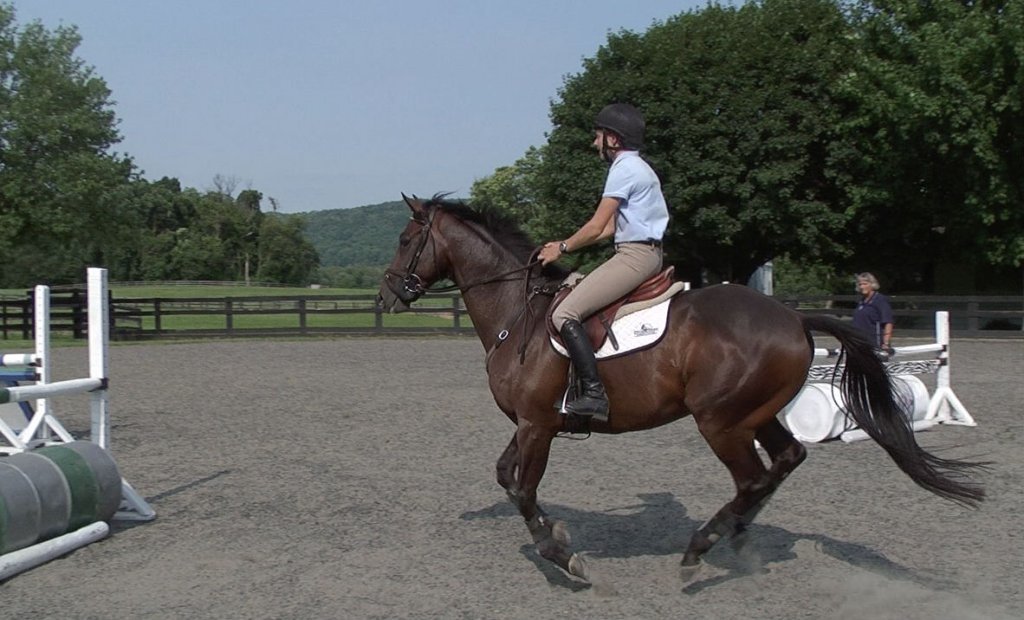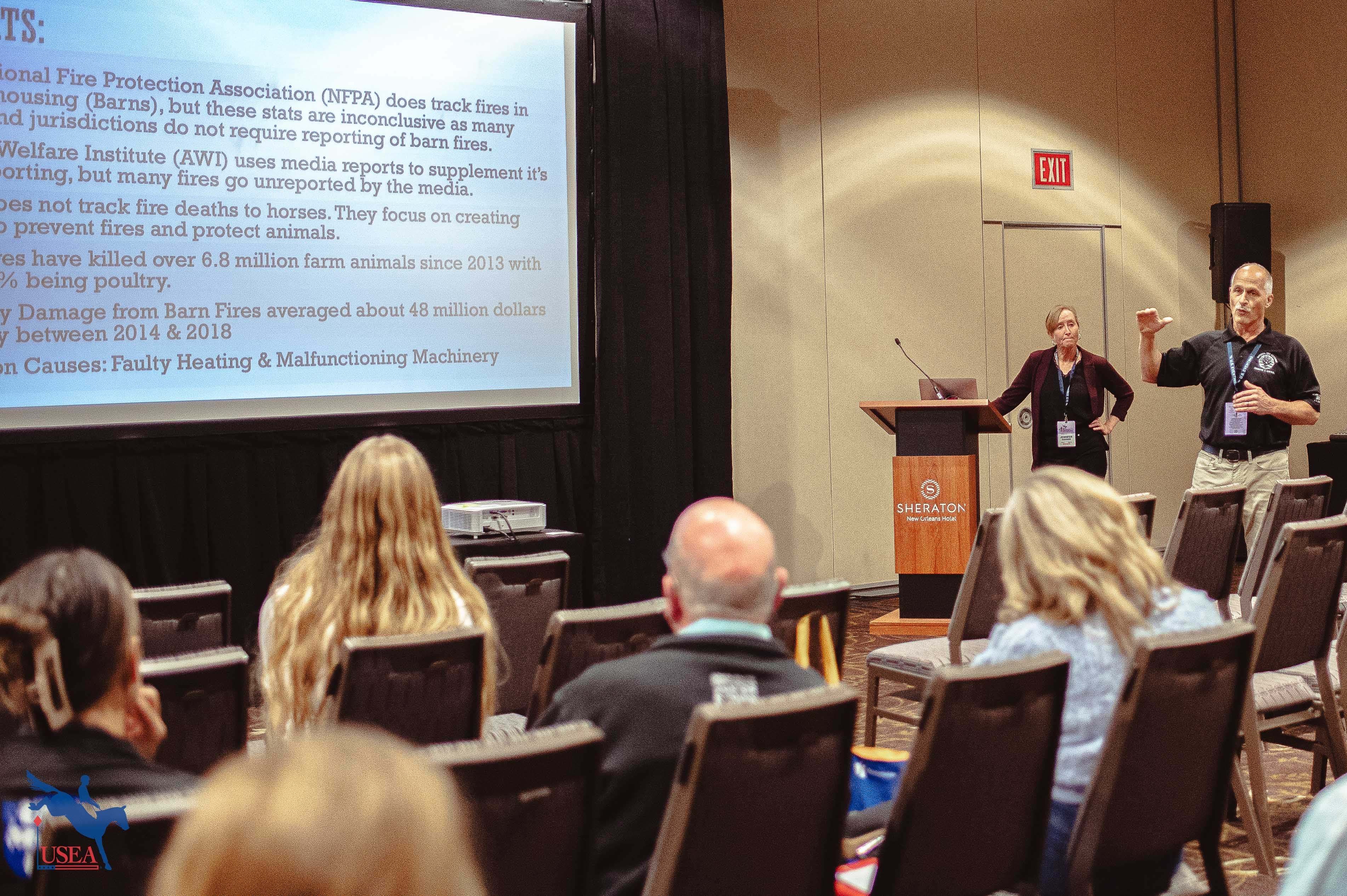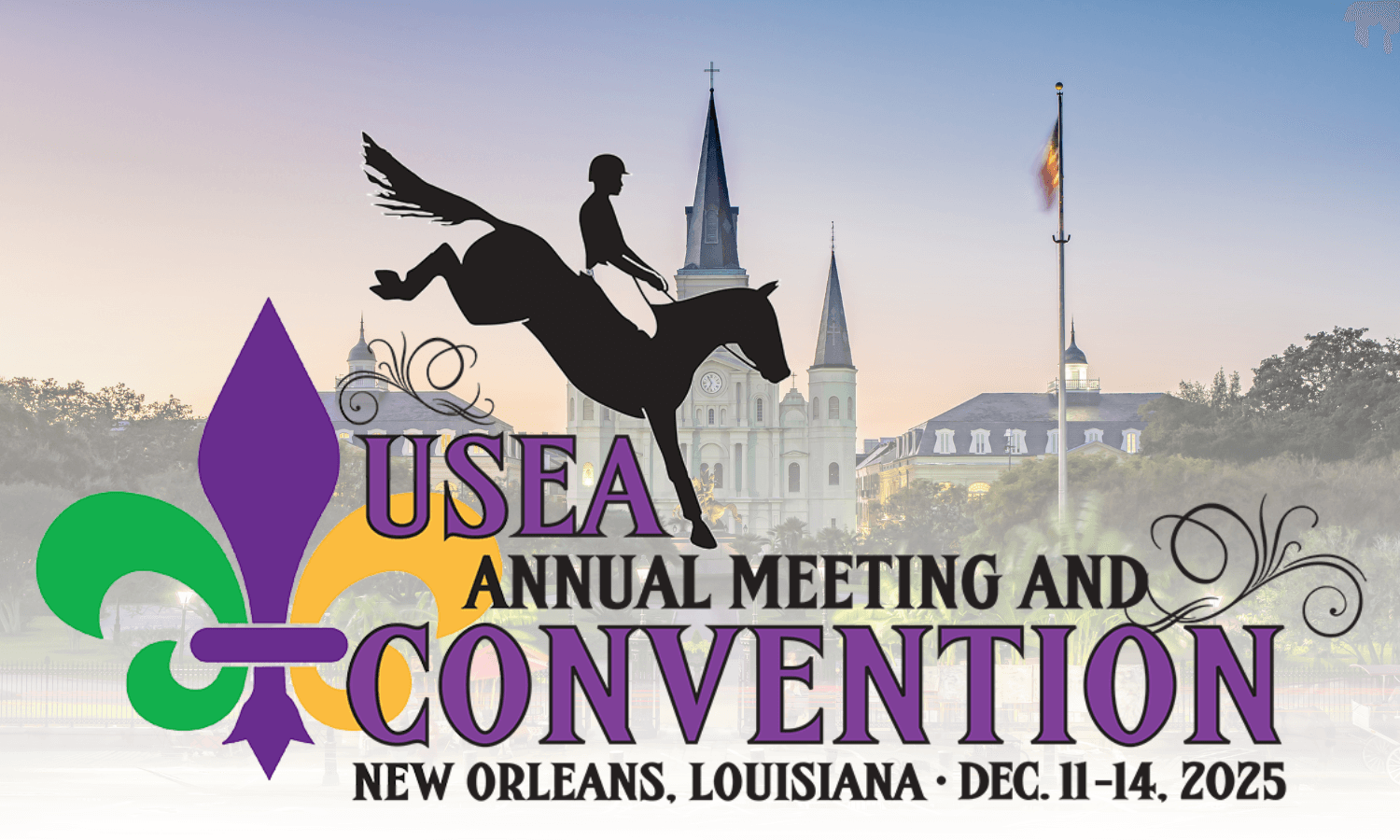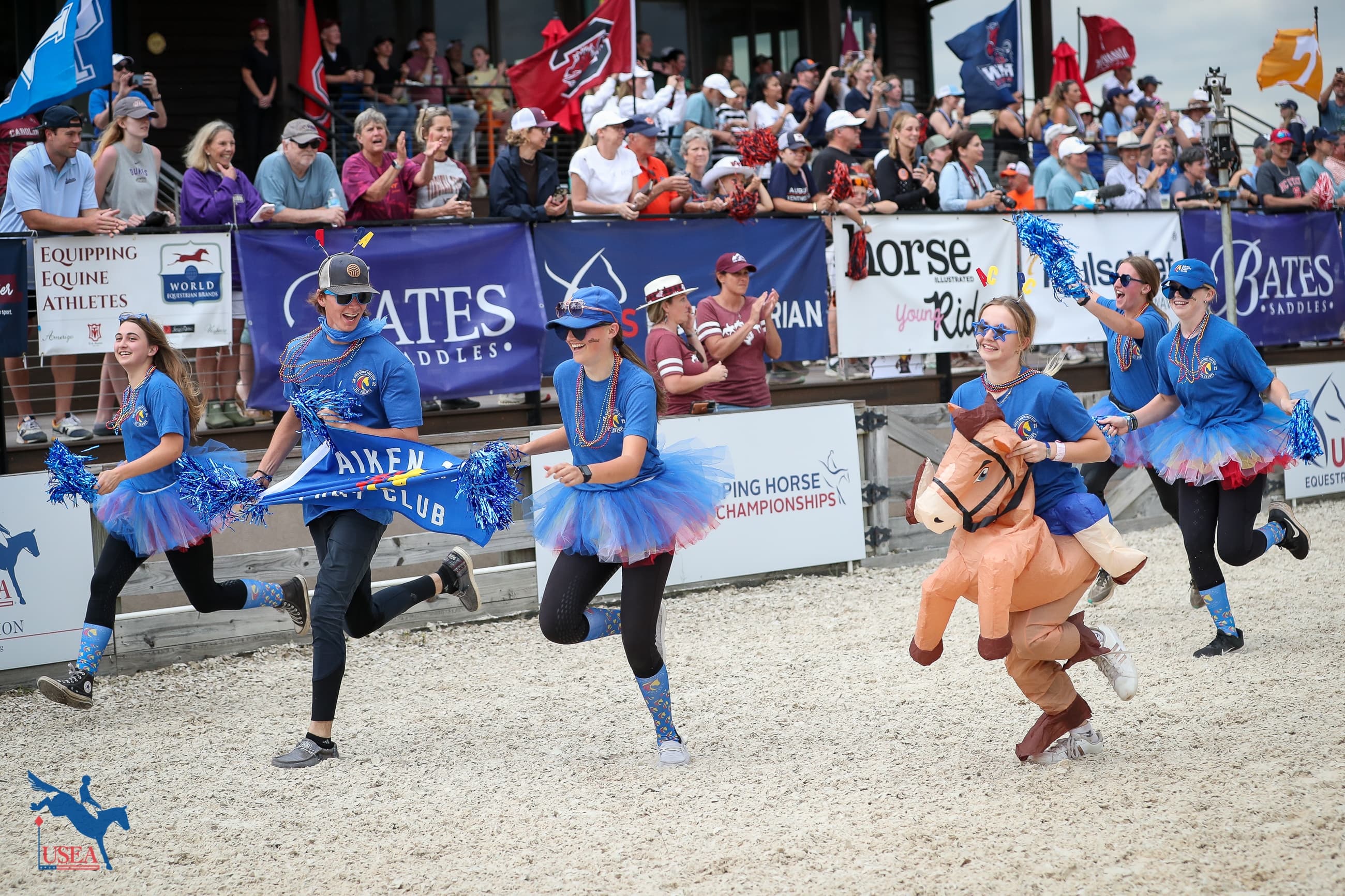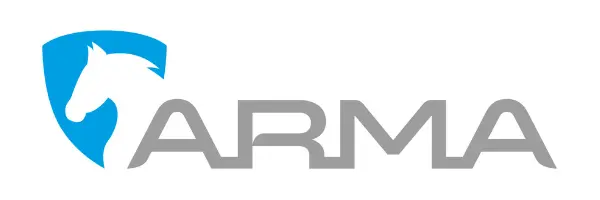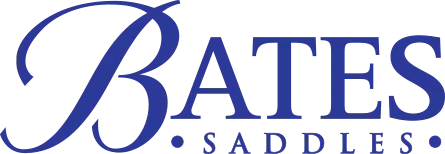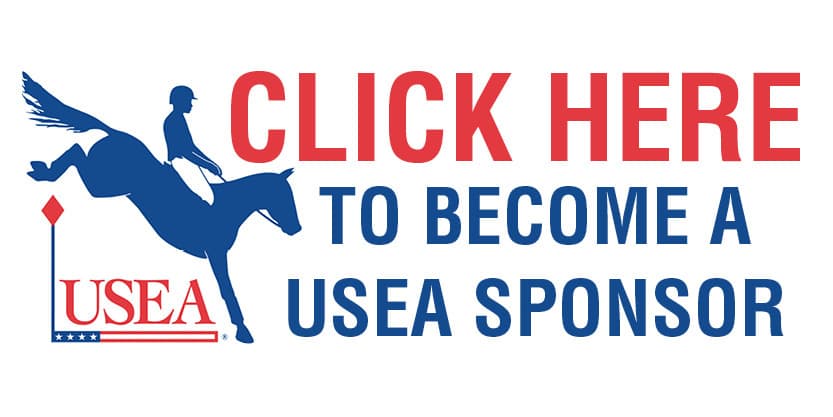Instructors Learning from – Each Other!
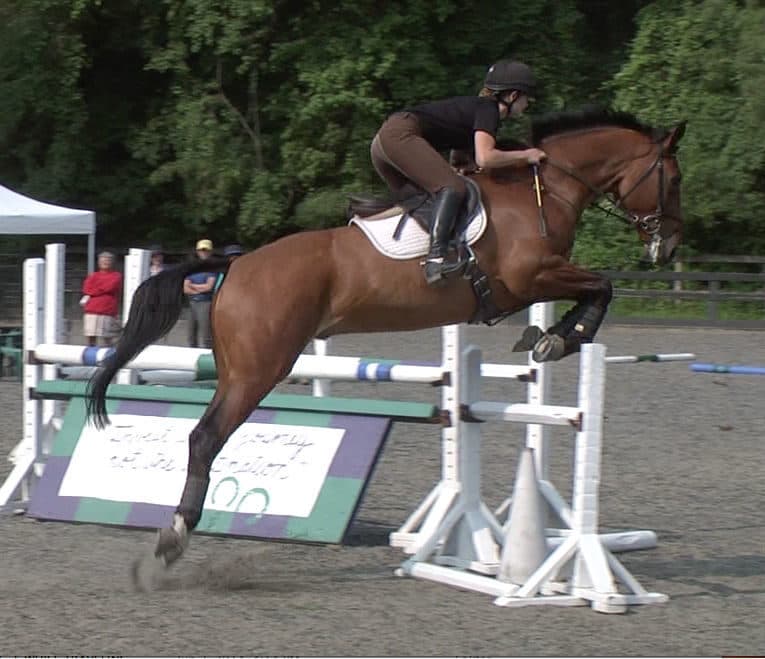
On July 28 and 29, the USEA Instructors’ Certification Program Committee (which includes the ICP faculty) got together at Phyllis Dawson's Windchase in Purcellville, Virginia, to do what the committee does annually – something that we recommend that all our ICP-certified instructors do: participate in a co-teaching clinic. Via small-group professional conversation and teaching, a co-teaching clinic invites instructors to continue to develop their eye and to refine their understanding of how to cultivate and refine riders’ and horses’ skills. As David O’Connor suggests, “Let’s raise the level of the riding to raise the level of the horses’ performance.”
With six rider/horse pairs riding in small groups of two, ICP Committee members focused this year on the instruction of quality show jump riding. Most of the six horses are young and competing at Preliminary; the five riders have competed at the Training through 4-star levels, respectively. The standards for identifying and applying safe, effective, and humane show jump riding skills at the Preliminary level translate readily to both lower and higher competition levels.
In just a few words here, it is not possible to cover everything that was addressed at this co-teaching clinic. But for a taste of a few significant – and perhaps unexpected! – morsels, please read on. And for an opportunity to view on tape and discuss the chief show jumping topics of this clinic, ICP invites you to attend the ICP Show Jumping Seminar that ICP faculty will present during the 2014 USEA Annual Meeting in Fort Worth, Texas, December 3-7. These and other video segments from the clinic will soon be available on www.eventingtrainingonline.com.
- “Converse with the horse.”
That is what a rider’s seat, legs, contact, weight, and even voice aids are meant to do – ask for, receive, and respond to the horse’s answers. On the flat and over fences, develop your “language” with your horse so that what you send and what you receive are appropriate to the task, clearly understood by both you and the horse, and consistent. Understand your horse’s disposition as well as his skills levels, so that, in your long-term development plan, you factor his disposition into your decision-making for both his training and his testing.
- “Varied rider positions”
Yes, there is the typical American forward seat for jumping – with the seat positioned above the saddle and with a partially closed hip angle. But variations of jumping position include the seat lightly in the saddle or deeply in the saddle, with the hip angle usually held more open as the rider sits more deeply. All of these seats should be situated over a secure lower leg with the rider’s weight flowing down the leg into the foot/heel. An event rider must practice sitting and riding all gaits in all variations of position and hip angle – so that, eventually and without having to think consciously, the rider will adopt whatever seat and hip angle best suit a specific jumping situation/goal.
- “Use the legs, seat, and reins to develop a balanced, engaged, and adjustable canter; then, allow slightly with the hands to give the horse a ‘place to be.’”
A balanced, engaged, and adjustable canter is necessary to quality jumping. What is added by allowing the horse a “place to be”? Think of the half-halt: during the allowing forward with the hands that concludes each half-halt, the horse demonstrates that he understands and will carry himself for at least a few steps in the new balance. Similarly, when the rider’s hands allow the horse a place to be in the engaged and balanced canter, the rider is inviting and accommodating that horse’s self-carriage at canter.
- “Canter thrust and thrust-conversion on approach to the fences”
Canter thrust is impulsion, the “releasing of the energy stored by engagement. The energy is transmitted through a back that is free from negative tension and is manifested in the horse’s elastic, whole-body movement.” Engagement is “the increased flexion of the lumbosacral joint and the joints of the hind leg during the weight-bearing (stance) phase of the movement, thus lowering the croup relative to the forehand (‘lightening the forehand’). Engagement is ‘carrying power’ rather than ‘pushing power.’” (USDF 2014 Glossary)
At the canter, in order to convert some of the horse’s kinetic energy to potential energy (i.e. coiling the spring) in preparation for its expression as the kinetic energy necessary for a jumping effort, using the aids for the appropriate degree of thrust-conversion, the rider engages and then channels that energy upward into the jumping effort. It is especially important to get right the thrust/thrust-conversion ratio when riding to a tall, vertical jump to better assure that the horse’s lift angle will be large enough to clear such a fence.
- “Can your horse jump like a pony?”
Ah, ponies! How they skip along in their approach to a fence with the elasticity and spring to jump over it! Once a rider and her horse find and confirm the canter engagement and balance that best set them up for jumping, they will discover that they can better handle the unexpected. Horses can learn to be (almost!) as quick on their feet, as well balanced, and as comfortable with a 10’ stride as a pony.
- “Calm”
Jumper riders like Katie Prudent emphasize that jumper horses – and riders – are calm when they are jumping. How so? Jumper riders have cultivated a true jumping canter with their flatwork, they have exposed their horses to all kinds of jump types and jump lines, and they approach each fence with their own and their horse’s eyes on it. Together the rider and horse are self-composed, without agitation. All of their energy is calmly focused upon the task at hand.
At the ICP Show Jumping Seminar at the 2014 USEA Annual Meeting, the ICP Committee will show and discuss the above topics, as well as others like the following: how to develop and maintain an adjustable show jump canter well before and right after each jumping effort; how to develop your eye to recognize a distance; how to develop the confidence that you and your horse can deal well with the unexpected. We welcome you to join the discussion!
ICP thanks our riders – Cindy Anderson-Blank, Amy Griffin, Melissa Hunsberger, Heidi Robertson, DaniellaTheurel.
